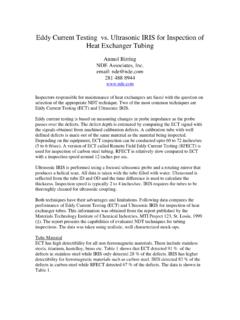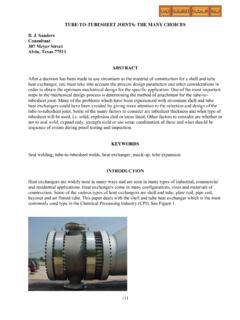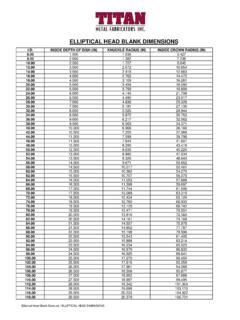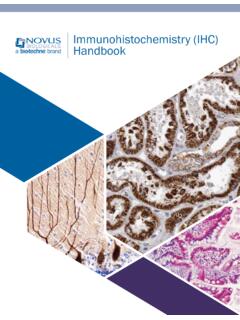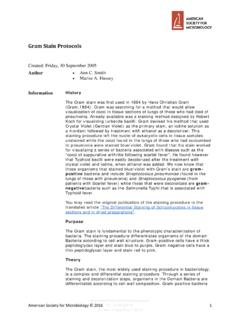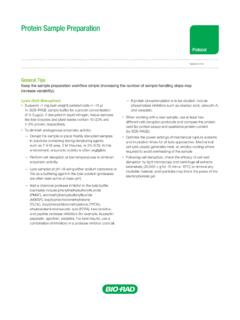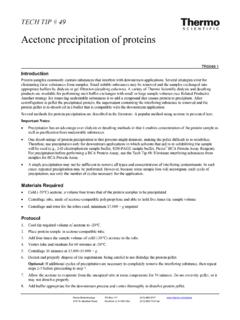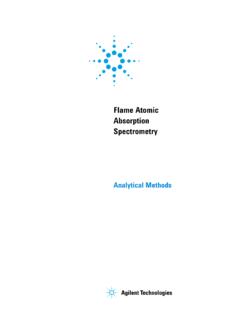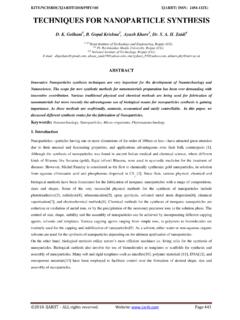Transcription of How to Weld Type 2205 Code Plus Two Duplex Stainless Steel
1 How to Weld Type 2205 CodePlus Two Duplex Stainless SteelOutokumpu StainlessMaterial Description2205 is a Duplex (austenitic-ferritic) Stainless Steel thatcombines many of the best properties of austeniticand ferritic Stainless steels. High chromium andmolybdenum contents provide excellent resistanceto pitting and crevice corrosion. The Duplex structureis highly resistant to chloride stress corrosioncracking. 2205 has outstanding strength andtoughness and possesses good weldability. The trademark Code Plus Two indicates thecommitment, not only to meet the requirementsfor S31803 as established in ASTM and ASME,but also to meet two additional requirements. The first requirement was that nitrogen should bein the to range to gain its benefits inhigher strength, higher corrosion resistance, greatermetallurgical stability, and superior propertiesafter welding.
2 The second requirement was thatall mill products should pass a test for the absenceof detrimental intermetallic phases. The tests developed by Outokumpu Stainless for this purposehave been formalized as the ASTM A 923 standardtest special requirements now define a newquality of 2205, designated S32205. S32205 isdual certifiable as S31803, but represents whatusers have come to expect of 2205 Steel . BothS31803 and S32205 are included in all applicableASTM product increased strength of S32205, relative tothat of S31803, resulting from its higher nitrogen isnow being recognized by ASTM and ASME. TheASTM has designated S32205 as , Heat Treatment, and MachiningHot Forming2205 is hot formed in the range 2250 1750 F(1230 955 C).
3 In this range, the material has lowmechanical strength and good hot ductility. If slowcooled or held at temperatures between 600 and1750 F (315 955 C), the combination of strainand temperature can lead to rapid room temperatureembrittlement by the formation of sigma phaseand other detrimental intermetallic annealing with rapid cooling, ideally waterquenching, is recommended after hot FormingBecause of its higher strength, 2205 requires higherforces for cold forming than those typical foraustenitic Stainless steels. Additional allowance forspringback is necessary. Outokumpu Stainless 2205may be formed on equipment typically used forforming austenitic Stainless steels, once allowancehas been made for its higher strength.
4 Designs with2205 frequently have used its higher strength topermit reductions of gauge, significantly easingmany forming applications. Full annealing andquenching is recommended after severe cold Treatment2205 is annealed at 1900 F (1040 C) minimumwith subsequent rapid cooling, ideally waterUNS S32205, S31803 (wrought products)UNS S39209 (bare welding wire)UNS J92205 (cast products)ASTMASMEP late, Sheet, StripA 240, A 480SA-240, SA-480 Bar, BilletA 276, A 479SA-479 Pipe, TubingA 789, A 790, A 928SA-789, SA-790 Forgings, FittingsA 182, A 815SA-182, SA-815 CastingsA 890 TestingA 923 ASME Code Case 2186 (Embossed Assemblies)ASME/ANSI for A 182, A 240, A 479, A 789, A 790 ASME/ANSI , ASME/ANSI Code Case 153 ASME/SFA , SFA , and SFA P No.
5 10H, Group 1 E 2209-XX, ER 2209, E 2209T0-XNACE MR0175 SpecificationsType 2205 Code Plus Two Duplex Stainless Steel2quenching. This treatment applies for both fullsolution annealing and stress-relief may be machined with high-speed Steel tooling at the same speeds and feeds as Type 316 Laustenitic Stainless Steel . With carbide tooling, positive rake angle, and C-5 and C-6 grades forroughing and finishing, respectively, should beused. Cutting speeds should be reduced by about20% from those typical for Type 316L. The highstrength of 2205 requires powerful machines andexceptionally strong and rigid tool General GuidelinesThe goal in welding any Duplex Stainless Steel is toobtain fusion and heat-affected zones having theexcellent corrosion resistance of the base metal and sufficiently high impact toughness for theapplication.
6 2205 Code Plus Two base metalhas an annealed structure with ferrite content inthe range of 30 55%, and is virtually free of intermetallic phases. Welding procedures should bedesigned to produce this same structure in the weldmetal and heat-affected zones. The weld thermalcycle, as well as filler metal and protection atmosphere, will control this structure. Near thefusion temperature, the structure of Duplex stainlesssteels is entirely ferrite. The desired 30 55% ferritecan be achieved only if the cooling rate is slowenough to allow austenite to re-form as the weldcools. If the cooling rate is too slow, however,embrittling intermetallic phases may form in spiteof the presence of the optimum ferrite low heat input followed by rapid coolingwill produce a predominantly ferritic heat-affectedzone with reduced toughness and corrosionresistance.
7 This might occur with a GTAW washpass or resistance spot welding. On the other hand,excessive time in the 1300 1800 F (705 980 C)range can lead to formation of intermetallic phaseshaving a similar detrimental effect on properties. Outokumpu Stainless 2205 Code Plus Two hasbeen produced to assist the welder. One importantfeature is that 2205 Code Plus Two has , compared to the nitrogenpermitted by ASTM and ASME. This highernitrogen helps austenite re-form quickly duringcooling so that the weld and heat-affected zoneare more easily converted back to the optimalaustenitic-ferritic balance. In addition, special quality assurance procedures combined with thehigher nitrogen content make 2205 Code Plus Twomore resistant to formation of intermetallic Welding Products 2205 filler metals, typicallydesignated as 2209, are more highly alloyed withnickel relative to the base metal to assure a fusionzone with austenite-ferrite balance, toughness, andcorrosion resistance similar to those of the basemetal.
8 With Outokumpu Stainless 2205 base metaland filler, the welder has a workable range of operating conditions. By following the guidelinesprovided in properly qualified procedures, the weldercan produce economical constructions with consistent, high-quality of Intermetallic Phases2205 Duplex Stainless Steel can experienceseveral precipitation reactions. The intermetalliccompound, sigma phase, can precipitate between1300 1800 F (705 980 C). Carbides , HoursTEMPERATURE F The curve corresponds to an ambient temperature impacttoughness of 20 (27J). Figure 1 Time Temperature precipitation Diagramfor 2205 Plate with NType 2205 Code Plus Two Duplex Stainless Steel3precipitate between 800 1500 F (425 815 C),and 885 (425 C) embrittlement can occur inthe temperature range of 650 950 F (340 510 C).
9 If 2205 is held for sufficiently long times in any ofthese temperature ranges, precipitation reactions willoccur. The formation of precipitates can embrittle2205, reducing its ambient temperature ductilityand toughness, and can reduce its corrosionresistance. The rate of the precipitation reactions isdependent on the chemical composition of 2205and other metallurgical factors. Figure 1 shows aTime-Temperature- precipitation curve for a (57 mm) thick 2205 plate with curve corresponds to an ambient temperatureimpact toughness of 20 (27J). Time-temperaturecombinations to the right of the curve have lessthan 20 of Temperature Impact TestsLow temperature impact testing may be required bythe ASME code ( , Section VIII Div.)
10 1 UHA-51),by a customer specification, or a requirement tomeet ASTM A 923 Method B, which calls for asingle impact test at -40 F (-40 C). Many factorsmay adversely affect the low temperature impactproperties of welds, , elevated ferrite content,presence of deleterious phases, and elevated oxygencontent. The latter is a factor in welding processesthat use a flux, and is affected by the type of may not meet the minimum requirements ofA 923 Method B, because these acceptance criteriawere established for solution annealed plate, but thatdoes not necessarily mean detrimental intermetallicphases are present. As a general guideline, it ispossible to arrange the welding processes in orderof increasing impact toughness as follows: SMAW-rutile coating; FCAW; SMAW-basic coating; SAW,GMAW, GTAW.

